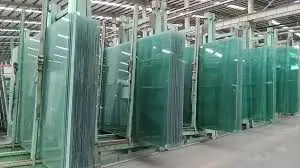Glazing in architecture refers to the use of glass in buildings, playing a critical role in both aesthetics and functionality. This technique encompasses a variety of glass applications, including windows, curtain walls, skylights, and glass doors. The integration of glazing into architectural designs allows for enhanced natural light, improved energy efficiency, and the creation of visually appealing structures.
.
The energy efficiency of glazing has significantly improved in recent years. Advances in technology have led to the development of low-emissivity (low-E) glass, which minimizes heat transfer while maximizing light transmission. This type of glazing helps in regulating indoor temperatures, thereby reducing heating and cooling costs. Furthermore, insulated glazing units (IGUs), consisting of two or more panes of glass separated by a space filled with gas, further enhance thermal performance and sound insulation.
what is glazing in architecture
Aesthetic considerations also play a vital role in the choice of glazing. Architects often use glass to create striking visual statements, enabling a seamless connection between the indoors and outdoors. This blurring of boundaries fosters a sense of openness and can significantly enhance the experience of a space. Moreover, glazing can be treated or tinted to provide privacy or control solar heat gain, catering to both functional and stylistic needs.
In addition to residential buildings, glazing is extensively used in commercial architecture. Skyscrapers, for instance, often feature expansive glass facades that not only serve as a design hallmark but also provide panoramic views of the surrounding environment. This trend is also evident in modern shopping centers, museums, and airports, where glass is employed to create welcoming and transparent spaces.
In conclusion, glazing is a fundamental aspect of contemporary architecture that merges practicality with visual appeal. Whether used for environmental benefits, aesthetic enhancement, or both, it continues to evolve, offering architects innovative solutions to design challenges in the built environment.
 Afrikaans
Afrikaans  Albanian
Albanian  Amharic
Amharic  Arabic
Arabic  Armenian
Armenian  Azerbaijani
Azerbaijani  Basque
Basque  Belarusian
Belarusian  Bengali
Bengali  Bosnian
Bosnian  Bulgarian
Bulgarian  Catalan
Catalan  Cebuano
Cebuano  Corsican
Corsican  Croatian
Croatian  Czech
Czech  Danish
Danish  Dutch
Dutch  English
English  Esperanto
Esperanto  Estonian
Estonian  Finnish
Finnish  French
French  Frisian
Frisian  Galician
Galician  Georgian
Georgian  German
German  Greek
Greek  Gujarati
Gujarati  Haitian Creole
Haitian Creole  hausa
hausa  hawaiian
hawaiian  Hebrew
Hebrew  Hindi
Hindi  Miao
Miao  Hungarian
Hungarian  Icelandic
Icelandic  igbo
igbo  Indonesian
Indonesian  irish
irish  Italian
Italian  Japanese
Japanese  Javanese
Javanese  Kannada
Kannada  kazakh
kazakh  Khmer
Khmer  Rwandese
Rwandese  Korean
Korean  Kurdish
Kurdish  Kyrgyz
Kyrgyz  Lao
Lao  Latin
Latin  Latvian
Latvian  Lithuanian
Lithuanian  Luxembourgish
Luxembourgish  Macedonian
Macedonian  Malgashi
Malgashi  Malay
Malay  Malayalam
Malayalam  Maltese
Maltese  Maori
Maori  Marathi
Marathi  Mongolian
Mongolian  Myanmar
Myanmar  Nepali
Nepali  Norwegian
Norwegian  Norwegian
Norwegian  Occitan
Occitan  Pashto
Pashto  Persian
Persian  Polish
Polish  Portuguese
Portuguese  Punjabi
Punjabi  Romanian
Romanian  Russian
Russian  Samoan
Samoan  Scottish Gaelic
Scottish Gaelic  Serbian
Serbian  Sesotho
Sesotho  Shona
Shona  Sindhi
Sindhi  Sinhala
Sinhala  Slovak
Slovak  Slovenian
Slovenian  Somali
Somali  Spanish
Spanish  Sundanese
Sundanese  Swahili
Swahili  Swedish
Swedish  Tagalog
Tagalog  Tajik
Tajik  Tamil
Tamil  Tatar
Tatar  Telugu
Telugu  Thai
Thai  Turkish
Turkish  Turkmen
Turkmen  Ukrainian
Ukrainian  Urdu
Urdu  Uighur
Uighur  Uzbek
Uzbek  Vietnamese
Vietnamese  Welsh
Welsh  Bantu
Bantu  Yiddish
Yiddish  Yoruba
Yoruba  Zulu
Zulu 

